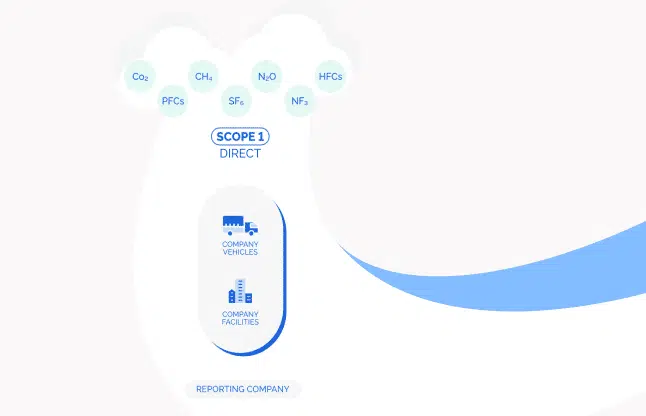Scope 4: Examples of emissions included in this scope
Reading 4 min
June 18, 2025
Summary
Scope 4 of the Carbon Footprint, focused on avoided emissions, plays a crucial role in reducing greenhouse gases. By implementing renewable energy technologies, innovations in energy efficiency, sustainable mobility solutions, ecological agricultural practices, and advanced waste management, companies can not only reduce their own carbon footprint but also help other actors decrease their emissions. This approach amplifies the positive impact of sustainable initiatives and significantly contributes to the fight against climate change.
INDEX
% de l'article lu

Scope 4 of the carbon footprint
What is Scope 4 ?
Scope 4, also known as avoided emissions, represents the reductions in greenhouse gas (GHG) emissions that occur outside the boundaries of an organization due to its actions, products, or services. For example, renewable energy technologies that enable customers to reduce their own emissions can be included in this scope.
Differences between Scope 4 and the other Scopes
Scope 4 differs from Scopes 1, 2, and 3 in the nature of the emissions it covers. While Scopes 1, 2, and 3 account for a company's direct and indirect emissions (from its own activities, purchased energy, and value chain), Scope 4 focuses on avoided emissions. These avoided emissions are the GHG reductions achieved by other actors thanks to the company's sustainable technologies or practices.
Each scope of the carbon footprint is distinct in its nature, sources of emissions, and calculation methods.

Examples of avoided emissions in Scope 4
Renewable Energy Technologies
Renewable energy technologies play a crucial role in the avoided emissions of Scope 4. For example, companies that produce solar panels, wind turbines, or biomass systems enable their customers to reduce their dependence on fossil fuels. The installation of solar panels on commercial or residential buildings helps avoid CO2 emissions generated by coal or gas power plants.
Wind turbines produce clean electricity, thus reducing the need for more polluting energy sources. These technologies not only contribute to the reduction of direct GHG emissions but also promote sustainable energy practices.

Energy efficiency and technological innovations
Companies that develop high-efficiency household appliances or energy management systems for buildings enable their customers to consume less energy. Innovations such as LED lighting systems, smart thermostats, and heat recovery technologies also reduce energy demand and, consequently, the associated GHG emissions.
By optimizing industrial processes and adopting cutting-edge technologies, companies can not only reduce their own carbon footprint but also help other organizations decrease their indirect emissions, thereby contributing to a broader positive environmental impact.
Scope 4, focused on avoided emissions, allows companies to reduce greenhouse gases
Scope 4, focused on avoided emissions, allows companies to reduce greenhouse gases by using renewable energy technologies, energy efficiency innovations, sustainable mobility solutions, ecological agricultural practices, and advanced waste management.
Mobility solutions
Companies that develop electric vehicles, eco-friendly public transportation systems, or bike infrastructures contribute to avoiding greenhouse gas emissions generated by traditional vehicles. Carpooling platforms also help reduce the number of cars on the roads, thereby decreasing overall emissions.
By promoting the use of more sustainable transportation modes and investing in green mobility technologies, companies can not only improve their own carbon footprint but also encourage eco-friendly behaviors among their customers and partners.
Sustainable agricultural practices
Sustainable agricultural practices are essential for reducing Scope 4 emissions in the Carbon Footprint. Adopting techniques such as agroforestry, crop rotation, and the use of cover crops can reduce greenhouse gas emissions by increasing carbon storage in the soil and reducing dependence on chemical fertilizers. Additionally, sustainable pasture management and improved feed efficiency for animals can decrease methane emissions.
Waste management and valorization
Waste management and valorization are crucial for reducing Scope 4 emissions. Companies can adopt recycling, composting, and reuse practices to minimize the waste sent to landfills. The implementation of energy recovery technologies, such as waste incineration with energy recovery, allows the production of electricity or heat from non-recyclable waste. Additionally, promoting the circular economy, where one industry's waste becomes another's raw material, helps to reduce overall emissions.